Written by R. Ann Parris on The Prepper Journal.
It’s a mystery in many houses – where in tarnation do the odd socks go? In others, there’s people like me who have a special ability to wear and snag holes … in just one sock … at a ridiculous rate.
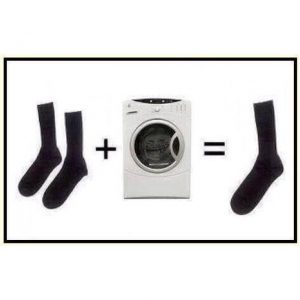


Happily, it doesn’t have to be so. Those socks have massive potential for increasing our preparedness.
They can save us money and effort now, and they can be especially useful in a protracted crisis! Unmatched socks have a place from our kitchens and baths, to our gardens and back, winter and summer.
Garden Tie-Ups
One of the best-known uses for socks in in the garden is as ties for our vining plants like tomatoes and heavier squash or melons. They can be used whole and as-is, although that can be bulky. They can be split longwise down to the toe to create longer lengths, or cut off in rings or shorter strips.
Socks can also help us by holding the fruit itself. We can split them and tie them at the center to make a 4- or 6-strand “X” that we tie up from around the bottom of fruits to suspend from a trellis, enabling us to grow vertically and save space. Doing so can also limits some of the garden munchers.
Alternatively, with thick-stemmed autumn-winter squashes and melons, ties can be suspended from near the base of the fruit to the supporting rack. (Psst … check to see if they’re ready to slip regularly.)
I also use socks to tie and cover the plastic bundle I make when I propagate by air layering, to tie young trees and shrubs to their protective posts, and when I create limb spreaders for young trees or am creating an espalier or diagonal cordon fruit tree.
While they do hold more moisture than garden twine, they’re also less abrasive. I like the fact that they have some elasticity, too. Instead of snapping, they bend like a willow in the wind, and in some cases, because of the “give”, they can absorb some of the damage we get from summer and winter storms.
Pollination Protectors
If we’re gardening with a long-term disaster or instability in mind, eventually we turn to seed saving. Many of our garden plants are promiscuous, which can present challenges. To keep seeds true for another season, we can cover up flowers before they open (to include corn) and hand pollinate. Hose and dress socks excel here, ensuring we have another harvest we can count on from our efforts.
If flowers are delicate, we can slice up yogurt cups, plastic bottles, seed tray cups; bend wire clothes hangers into spirals; or create a couple thin willow rings to form a hollowed-out frame and keep our thin socks and hose from putting too much pressure on our forming flowers and their young fruits.
(Full disclosure: Pro’s actually use paper bags for breeding corn – zero chance of pollen seeping through the weave.)
Pest Barriers
Socks and hose can also help save our fruits from predation. As with breeding stock, some fruits may benefit from a ring or frame that keeps the cloth from making direct contact.
Coddling moth on tree fruit is the most common foe defeated this way, but it can help with everything from birds and bramble berry bunches, to tomatoes and hornworms. Cloth socks can also be substituted for newspaper when protecting transplants from cutworms.
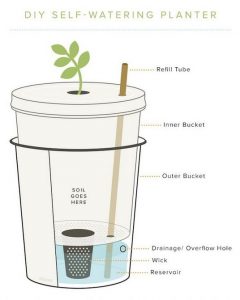
Wicking with Socks
Heard of Earthboxes, or sub-irrigated planters and beds (sometimes called self-watering)?
DIYs from buckets, storage totes, and 2L bottles regularly call for a wick. There’s no need to buy mops or pond baskets, though. A polyester sock filled with coir, wood chips, or your planting soil will work just as well and last nearly as long. Cotton and wool socks can be cut into strips to perform the same functions for smaller containers.
On a different note, farmers and gardeners have started cutting up cleaned waste wool pieces from shearing, and tilling it into gardens or sticking it near root zones, especially for particularly thirsty crops. The wool absorbs water, keeping it available to plants longer. Natural-fiber sock pieces can do the same.
Allium Chains
Never really got the hang of braiding garlic and onions into chains for storage? No big deal. Thin dress socks or hose can make it faster and easier to accomplish the same.
Once cured, just bundle them up. You can use bread ties, paper clips, or clothespins to separate bulbs in a chain instead of tying knots, or you can cut right below the knot. (Remember to save the “toe” for flower & fruit protectors.)
Goo Grabbers
Got any bottles of oil in the kitchen – or one of those oil sprayers to replace Spam? Get any dribbles down them?
No? Can you teach my entire family how to not do this?
If you do, or if you have slick stuff it’s tough to grab in the kitchen or shed, socks can help. Cut the toe off, slide it over, fold over if desired. Dribbles will catch in the sock, not pool under the sprayer or bottle, and you can gain a little extra traction on those bottles.
Their ability to prevent accidental splatter or drippage also extends to paint cans and shoes.
When you’re ready to paint, roll or twist your sock(s) into a thin rope, and tie it around the can. As with the oil, it’ll catch any drips from the rim.
When you’re painting and staining and priming, you can also slide mismatched and sole-survivor socks over your shoes (and your hands) to help limit any drips or side spray from making contact.

Washing Up
Got a carpet mess to clean up? Stick bar soap in one of those sole survivors of the laundry, dunk, scrub, repeat. Bar soap in a sock will also make it easier if you’re planning to hand-scrub your laundry at some point, with or without a board.
Tired of losing those little slivers of bar soaps, or of dealing with the mushy mess?
Stick them in a sock, and hang the sock from a hook. You could hang it to drip into the sink, but for even less waste, set it up so it drips onto a sponge or the floor-scrubby louffa squash you grew.
(Psst … that sock thing also makes it fast and easy to wash hands over a catch bucket while camping.)
When it comes to cleaning up, we can also repurpose lone socks as reusable “Swiffer” pads for dusting, sweeping, and spot mopping.
Socks also make excellent dip stick wipers (and “hot pot holders”) to tuck along the inside rim of a vehicle hood. Tuck a few in with your air compressor to save your hands (and knees) there, too, so you spend a little less time using soap, scrubbing stains, and patching holes with them.


Critter Care
Got a small dog or pup prone to getting super cold in winter? Piglets or rabbits that need a sweater? Doggy child like to dip its ears in its dinner? Or shake them after an injury?
Socks can be the answer.
With a few snips we can create hoods and sweaters for our pets, as well as some of our small livestock.
They can also be turned into chicken vests, or used to create stockings and suspenders to keep animals from reopening leg wounds or chewing “hot spots” that may develop from allergies to grasses and insect bites.
A quick knot, piece of Velcro, or old belt can work to hold them over the shoulder, or you can use some garden twine to tie off between their shoulders or to a harness.
Those stockings can also be used in winter to help dogs gain some traction on ice. There’s some limited assistance for dogs that end up with balls of packs snow between their toes, too.
The biggie for me in winter, though, was always in limiting how much deicer ended up on their feet and in the house. It only works for front paws, but since that’s what mine will sit there and lick most often, that’s a win.
Every tiny speck that turns their socks crunchy-crispy is a speck they’re not consuming, so it was worth it to me even not being a perfect “boot”. A quick coat of spray sizing or waterproofing limits that exposure further.
Hoofstock can have fitted socks used to replace light brush guards as well as help keep them from messing with an injury. Socks can also be soaked as fly repellents, or help keep a heat rub or anti-inflammatory dressing in place.
If socks aren’t big enough to slide over a hoof, we can still use them instead of ACE type flex-compression bandages. As with garden supports, we can slice them long wise from the opening to the toe and use them as a wrap.
Just make sure they fit well, won’t slide off, and that we use tape or a salvaged piece of Velcro, especially for animals we won’t be watching – constantly and closely.
Applying a medical aid does little good if Rin Tin Tin or Silver manage to swallow an ACE clip or step on a safety pin. (That goes for brand-new, purpose-specific items, too, not just repurposed items.)
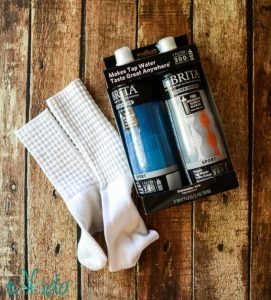
Solar Boosts
Got a water bottle that boils in summer? Pull a white sock over it. Want to help water absorb solar rays, either to stay warmer in winter or cut down on boiling time for instant meals in summer? Sheath it in a black sock instead.
The black sock trick can also be used as a heat sink for winter plants, with cans, bottles or emptied jars.
Socks as Saviors
We spend enough money on preparedness. Save it where you can. There are all sorts of things that can be given new life. Unmatched socks in particular are pretty useful around a home and yards – and we barely brushed the surface of their potential.
From feminine hygiene to small pouches, mittens to coin-roll saps, homemade draft rolls and dusting gloves, even as a washable alternative to paper for windows and mirrors – it’s a pretty big list, with pretty wide applications. They don’t have to cycle from waiting to the trash.
Go ahead and stash some back for hard times, but get started seeing nothing as a waste product now, too.
The post The Lone Sock appeared first on The Prepper Journal.
from The Prepper Journal
Don't forget to visit the store and pick up some gear at The COR Outfitters. How prepared are you for emergencies?
#SurvivalFirestarter #SurvivalBugOutBackpack #PrepperSurvivalPack #SHTFGear #SHTFBag



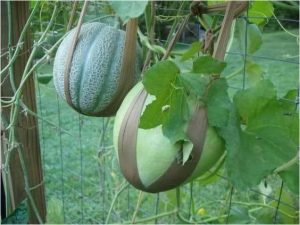

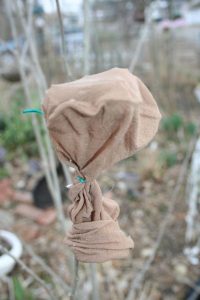


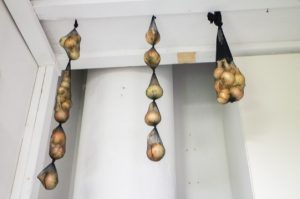

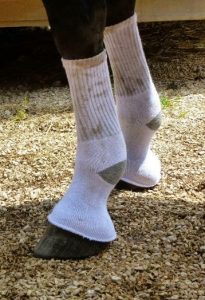



No comments:
Post a Comment